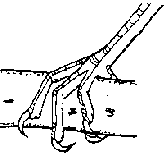Bird Feet
Birds have many different shapes and sizes to their feet. Like the shape of the bill, the anatomy of birds' feet tells us much about the ecology of different species of birds. Below are several examples of birds feet and what each one can tell us about the group of birds who possess them.
After reviewing this material try the "Who's foot is this?" activity.
|
SONG BIRDS or PERCHING BIRDS (warblers, thrushes, wrens, etc.) have independent, flexible toes, with one pointing backwards, ideal for grasping perches. Why don't perching birds fall out of trees when they sleep? When perching birds sit, a tendon on the backside of the ankle automatically flexes locking their toes around the branch. With feet locked, sleeping birds don't fall. As the bird stands up its feet release. |
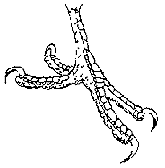 |
WOODPECKERS have two toes pointing forwards and two backwards; for climbing up, down, and sideways on tree trunks. |
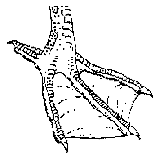 |
WATER BIRDS such as ducks have webbing between their toes for swimming. GULLS also have feet similar to these so they don't sink while walking in the soft sand or mud near the water's edge. |
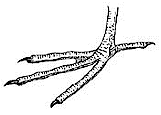 |
WADING BIRDS. The long toes of herons, which spreads the bird's weight over a large surface area, facilitates walking on soft surfaces near the water's edge (where wading birds like to eat). |
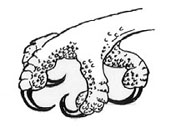 |
RAPTORS such as hawks, eagles, and owls use large claws (called talons) to capture, kill, and carry prey with their feet. |
 |
Pheasants and chickens use their strong feet to scratch the dirt and leaf litter to uncover seeds and insects. |
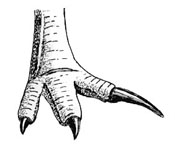 |
Strong-legged flightless birds, like the cassowary, protect themselves by kicking with their powerful feet and sharp claws. |
